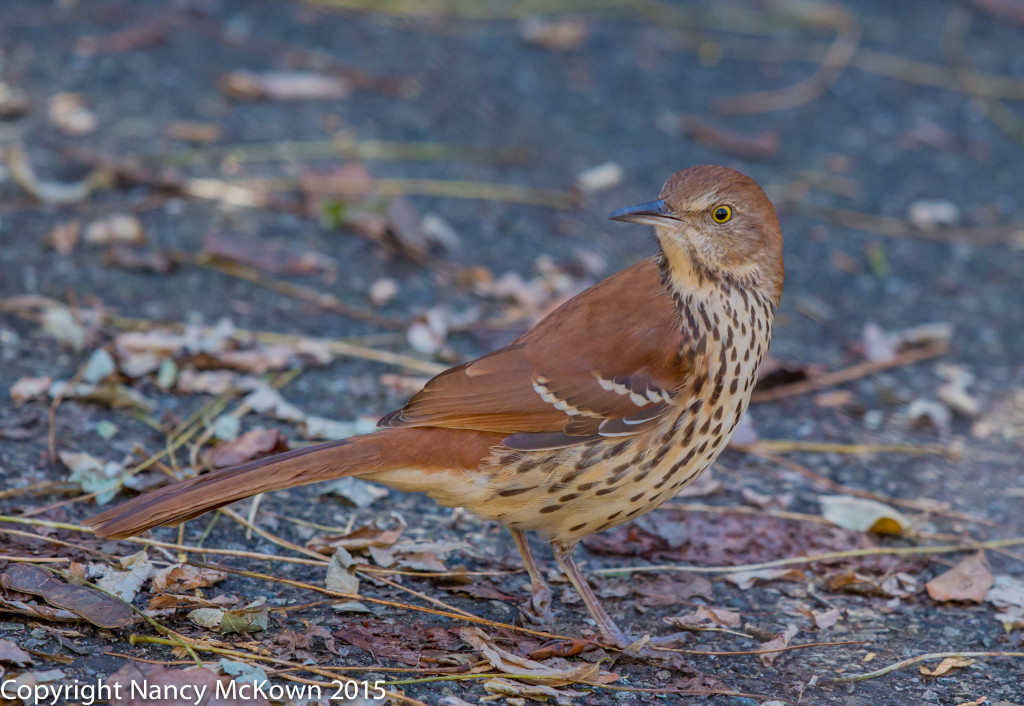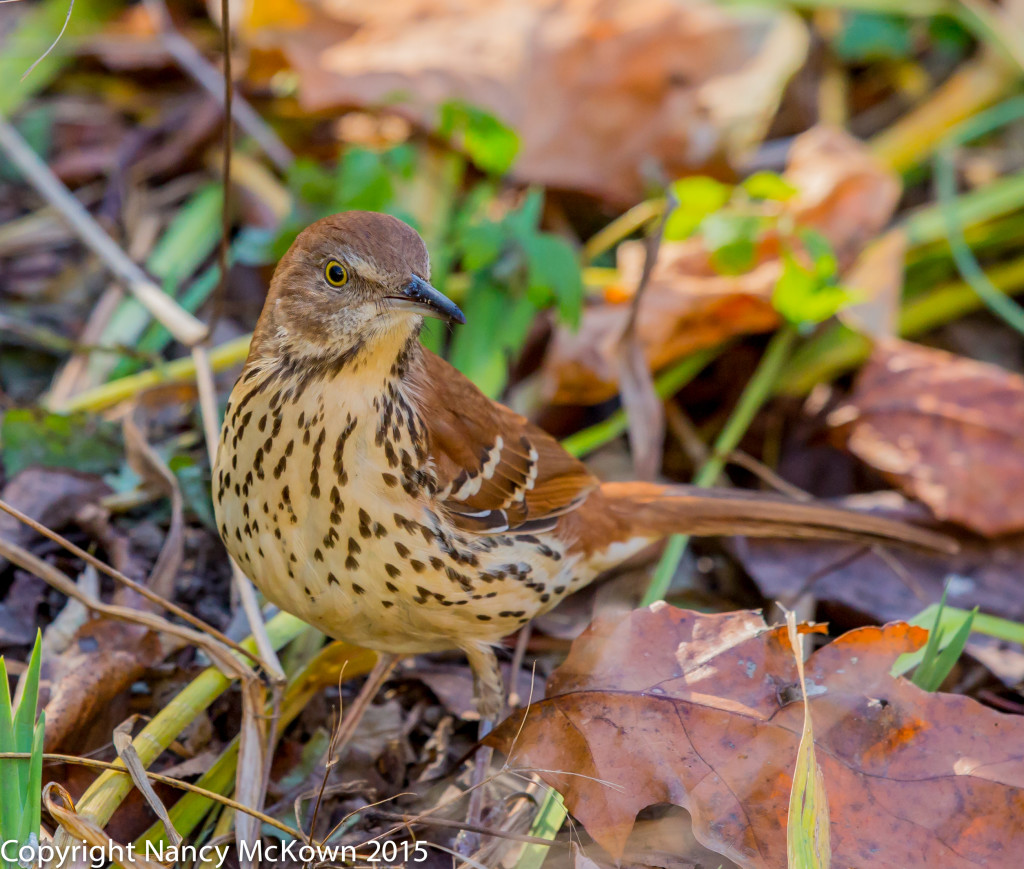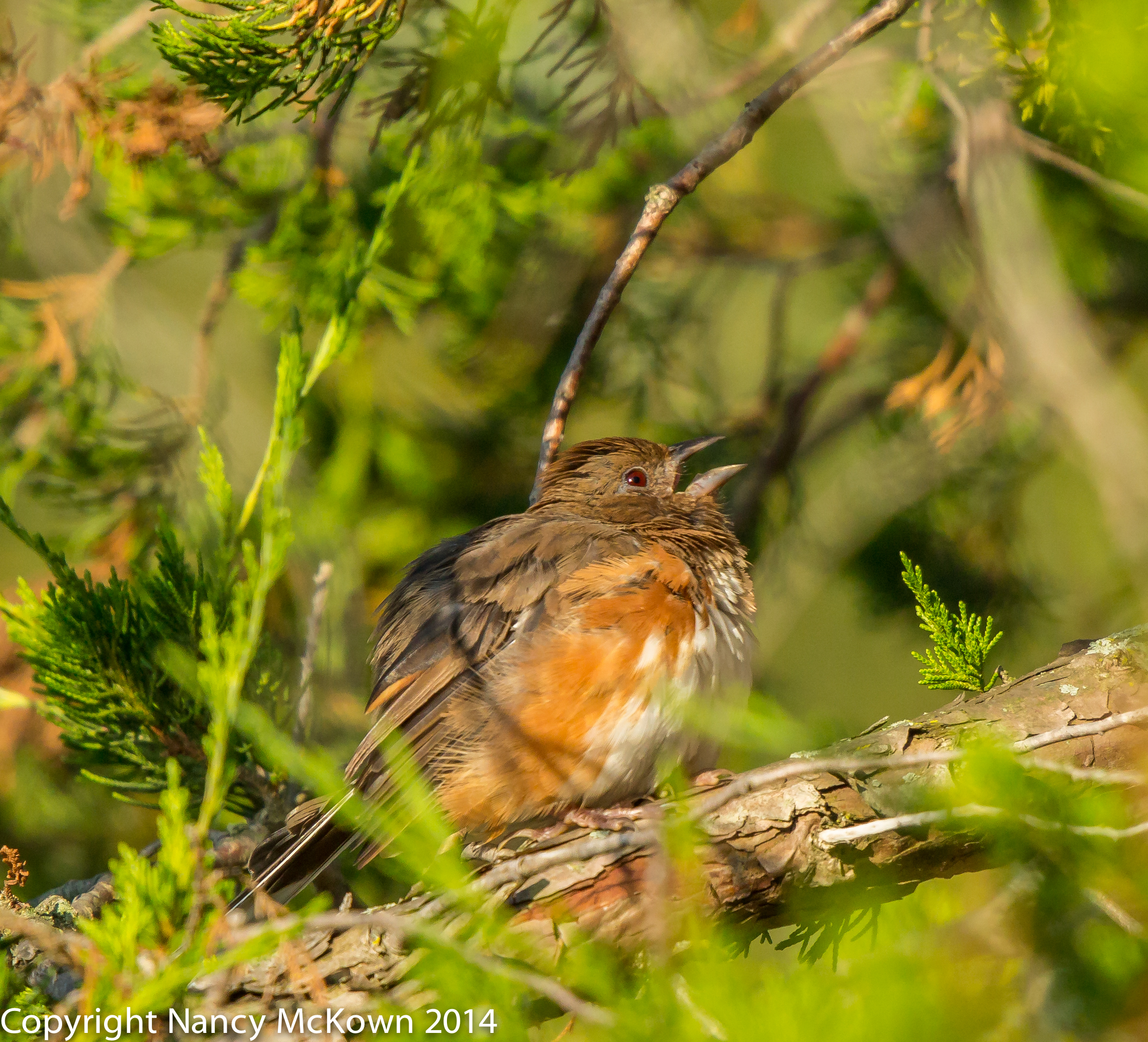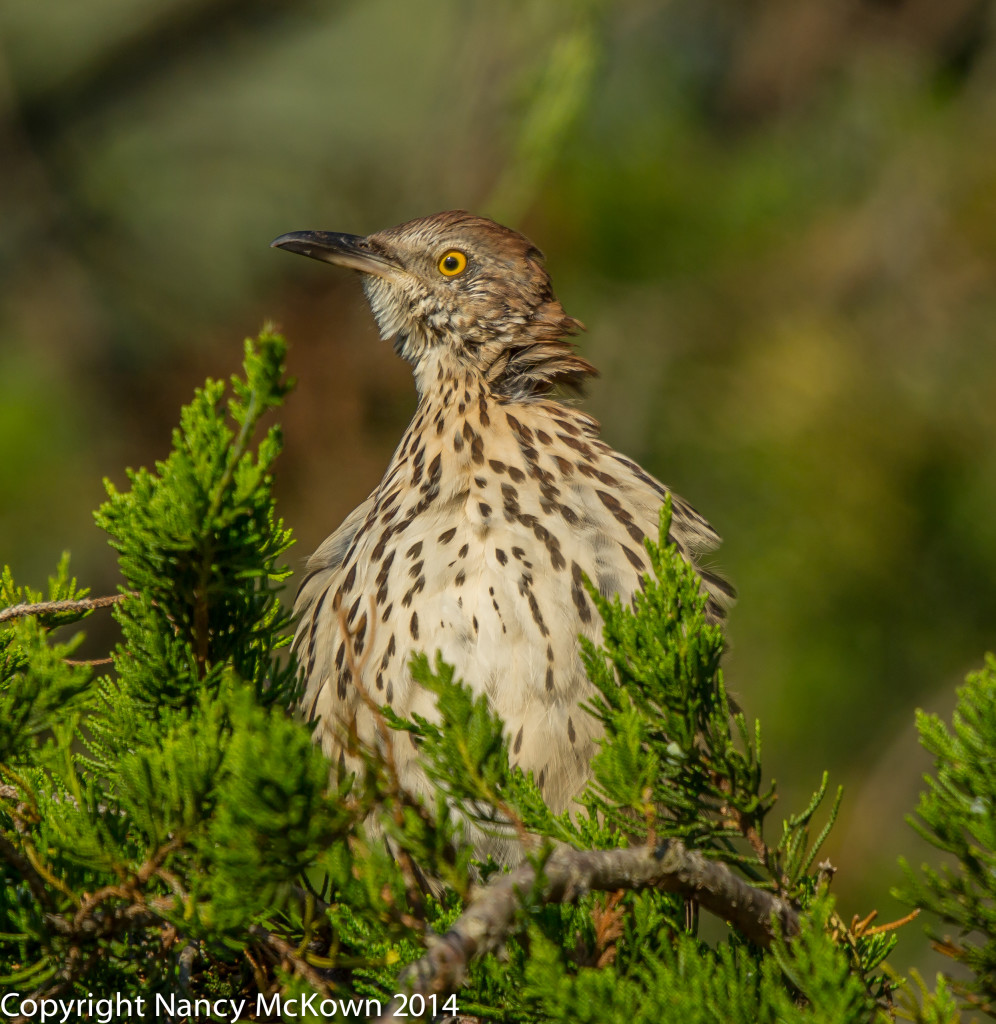Photographing Birds Who Linger in the Cold
I photographed this Brown Thrasher near our suet feeders in late November, 2015. He lingers still- mostly hiding out near the edges of the woods. Brown Thrashers are considered to be “short distance, partial migrates”. In the colder northern states, these birds head south to warmer climates. In the south, Brown Thrashers stay in their nesting grounds year-round.
It’s been fairly warm in SW Michigan so far, with only 6″ or so of snow, but winter will certainly come. It has been my observation that a small percentage of (young and crazy?) birds of almost all migrating species do not migrate. See this post for more information on the perils of migration.

ISO 800; f/5; 1/400 Second
Experimenting with Aperture
I took a couple shots of this Brown Thrasher with my 500mm 4.0 L II lens wide open when I first saw him in my yard. He was more interested in the suet cake particles that had dropped to the ground than he was in me, so I decided it was safe to experiment with a tighter aperture.
Optimal Through-the-Lens Light
On modern DSLRs, the camera stops down the lens’ diaphragm (black metal blades inside the lens) to the aperture size specified right when the shutter release is pressed. That means that at all other times, the lens aperture is wide open to the lens’ maximum size, no matter what the aperture is set to. (On my 500 mm lens, 4.0 is the maximum aperture. On my 300mm lens, 2.8 is the maximum aperture.) This is done so that the photographer will have optimal through-the-lens light when composing and focusing.
Previewing Depth of Field
Unfortunately, all this light does little to help gauge depth of field. Consequently, most cameras include a DOF button that will allow the photographer to preview precisely what is in sharp focus and what is not.
Brown Thrasher
ISO1250; f/7.1; 1/640
Experimenting with the DOF Button
When using the DOF button, the more you tighten the aperture, the darker the scene gets in the viewfinder. I started out by setting the camera’s aperture to f/7.1 – my minimum aperture when the light is strong and unobstructed. Initially, with the DOF button engaged, it was simply too dark for me to see through the viewfinder how much of the scene was in focus. I tried throwing my camouflage sheet over myself and the camera to help my eyes adjust to the darkness. Eventually, after fiddling around with wider apertures, my strained eyes did slowly adapt to the point where I could determine depth of field.

ISO1250; f/5.6; 1/500 Second
Not for Me
I don’t particularly like using the DOF button. It’s just too time consuming. Besides, after years of experience in bird photography, I have a good sense of how much depth of field my telephoto lenses will deliver.
Assign DOF Button A Different Function
The DOF preview button is located in a very prominent place at the back of my camera. DOF preview naysayers recommend that photographers assign a different function to the DOF button so that this prime real estate doesn’t go to waste. Canon makes it simple to re-assign buttons to suit your preferences. I’ve changed the DOF button to toggle AI Servo Focus when held down–something I find much more useful.
To read more about Depth of Field, press this link.
To read more about Brown Thrashers, masters of avian acoustics, press this link.



